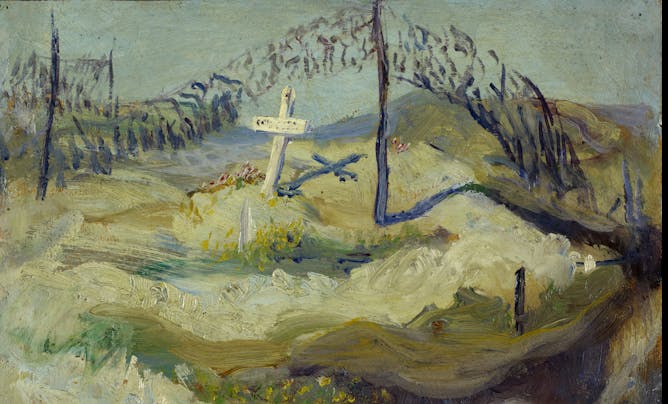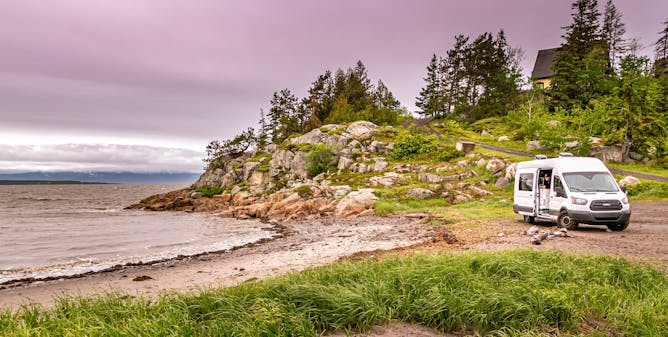|
In the lead-up to Remembrance Day this year, with the U.S. election on the minds of many of us, the fragility and promise of democracy and its historical failures to help everyone flourish are coming into clear view.
I’ve personally been finding stories from other eras to be so helpful now. It’s as though people can reach across time to remind us paradoxically both that our moment exists in a larger context — and that our individual choices matter in the face of the world’s unknowns and ugliness.
Today in The Conversation Canada, Irene Gammel of Ryerson University relays the astounding story of Canadian painter Mary Riter Hamilton’s war-time documentation of Europe’s battlefields. Gammel has written a new biography of the artist and her stunning oeuvre that defied war painting conventions of her day. I plan to make it part of my pandemic reading list.
Gammel shares that for Remembrance Day this year, Canada Post dedicated a stamp to Hamilton’s memory that shows her 1919 painting “Trenches on the Somme,” “in which scarlet poppies grow along white chalk walls of the trench. The painting exhibits her trademark style, which often puts the viewer inside a trench.”
Also today:
Regards,
|

‘Isolated Grave and Camouflage, Vimy Ridge,’ by Mary Riter Hamilton, May 1919, oil on wove paper.
(Library and Archives Canada, Acc. No. 1988-180-223, Copy negative C-141851)
Irene Gammel, Ryerson University
After Canadian painter Mary Riter Hamilton was rejected for service as a war artist because she was a woman, she trekked battlefields to create more than 320 works that recall the missing soldiers.
|

Vanlifers enjoy the freedom of living in their vans.
(Alex Guillaume/Unsplash)
Scott B. Rankin, Thompson Rivers University; Angus J Duff, Thompson Rivers University
Understanding the experiences of van dwellers is important not just for those looking to cut their ties to rents and mortgages, but also for community planners and employers.
|

An estimated 29 million mammals are killed each year on European roads.
(Shutterstock)
Jochen A.G. Jaeger, Concordia University; Ariel Spanowicz, Swiss Federal Institute of Technology Zurich; Fernanda Zimmermann Teixeira, Universidade Federal do Rio Grande do Sul
Roads and traffic are causing massive mortality of wild animals worldwide and the road network is rapidly expanding. Can the wildlife death toll be stopped?
|

Joe Biden et sa vice-présidente Kamala Harris auront la lourde tâche d'apaiser une société dont les deux camps se regardent en chiens de faïence.
AAP/AP/Carolyn Kaster
Jared Mondschein, University of Sydney
La victoire de Joe Biden ne suffit évidemment pas, à elle seule, à mettre fin aux profondes divisions de la société américaine.
|
Politics
|
-
Adam Habib, University of the Witwatersrand
There are individual activists and political groupings who believe violent action is legitimate and use the circumstances to actively drive such behaviour.
|
|
COVID-19
|
-
Cate Varney, University of Virginia
The long-term effects of obesity have been well documented, but immediate effects have not been as evident. The coronavirus is changing all that, as those with obesity seem particularly vulnerable.
|
|
Education
|
-
Nir Kshetri, University of North Carolina – Greensboro
Has technology gone too far to keep students honest during exams? A scholar on privacy and technology weighs in.
|
|